AGENDA
LA CENTRAL DEL CIRC
TRAINING
CREATIVITY AND RESEARCH
The objective of the Transits residency program is to offer support to the companies that are in need of a physical space and support to carry out their artistic projects (research, creation, rehearsals, etc.), encouraging artists to take a more active approach to research and challenge their work.
In order to meet the needs of the stage in which the creative process of an idea or project finds itself, and enable true progression, we’re proposing various residency formats, accessible to artists and companies following a public call held in November.
However, the format and conditions of the residencies evolve each year, in order to maintain their relevance and be up to date with contemporary circus reality.
Here you can read the rules and requirements of the last public call.












Artists and companies in residence





The Charge Maximal de Rupture company (CMR) was born within the 31st CNAC 2019 promotion, composed by Fernando Arévalo, Marica Marinoni, Pablo Pe.ailillo, Héctor Díaz and Ma.l Thierry. They begin their journey under the wing of Galapiat Cirque, and then look for their own creative colours and their own ways of conceiving the collectivity.
Winners of the circus commission of the Beaumarchais-SACD Association in 2021, the company begins to consolidate itself with the parallel creation and distribution of Quiproquo (creation 2021) by Hector and Ma’l; and 9.8 by Pablo and Manuel (creation 2022).
This company is based on its plurality, thus carrying different creative projects at the same time, each developed by at least one of the members of CMR in collaboration with other artists to establish creative collectives. The collective gathered around the QUIMERA project is composed of Pablo Penailillo, Nicol·s Palma and Cristóbal Espoz, and this is the team involved in the creations with the aerial tapes.
QUIMERA
QUIMERA is a circus project that addresses the close bond that exists between the concept of “attachment” and that of “belonging”. Considered for the hall, in front format adaptable to the circular, it is performed by three circus artists united around the same apparatus: aerial straps.
The center of our project is our relationship to this object and how this common bond expresses the relationship between us. The starting point of QUIMERA is the essential condition (and also the constraint) of straps: the attachment. This apparatus has the principle of connecting a body to ceiling, and the fact of being attached to this object suggests a fusion between the acrobat and the object, which thus become a single entity.
The aim is to develop and divert this principle to discover how it is applicable to a group. Anchor yourself into the sky, to earth, to others, and become together one single creature. We start from the desire to make a journey together, that goes from three individuals to one creature, from personality to entity, from individuality to collectiveness.
Starting with us, three people that develop their personalities and relationship between them, until transform into a one single whole.This is an evolving journey that goes from a single unitary organism which grows, develops, adapts, separates and dismembers until it comes back into three individuals, into three beings humans. We dive into collective thinking, like that of a pack, of a flock of fish or birds, and in a thought of unity, like that of a cell or an organ. We therefore switch from the development of our humanity and individuality into a form of a united organism, and then come back transformed in the process. Then a question is posed: what to do now with this humanity? The idea is to take this question as a springboard to share our questions about this that defines us as people: our experiences, traumas, dreams and frustrations, and above all the relationship that exists between the three of us
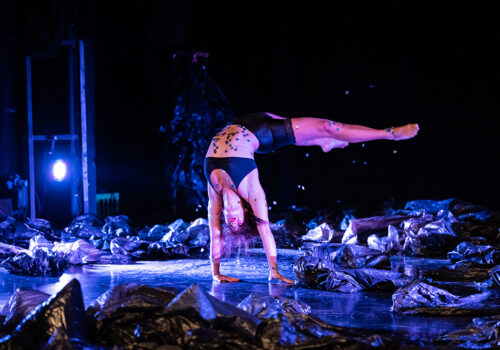


Phonophobia is a company formed by Karita y Maristella, multidisciplinary artists who explore different forms of scenical art such as circus, singing, physical theatre and dance. Currently, they are in the process of creating their second project ‘Fast food emotion’.
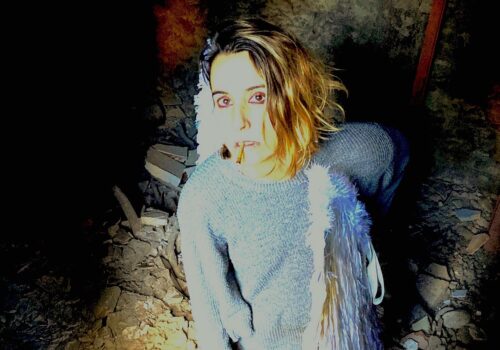


Silvia Capell (Catalonia) studies psychology and is trained as a professional circus artist at the La Tarumba school in Lima, Peru. Later he returns to Barcelona where he builds his artistic life and works in different companies and projects, such as Les Capgirades, Colectivo La Persiana, Los Galindos, La Virgueria, Les Impuxibles and Companyia Voël.
In 2015 she created her own company with a solid commitment to contemporary art and with the aim of generating risky art and direct dialogue without anesthesia with the public. After ‘Homenaje’, her first creation, she’s currently in the process of creating ‘Ángela Caído’.
Ángela
sóc a baix, però m’agradaria ser a DALT.
sóc a baix, però m’agradaria ser a DALT.
sóc a baix, però m’agradaria ser a DALT.
Att. Ángela
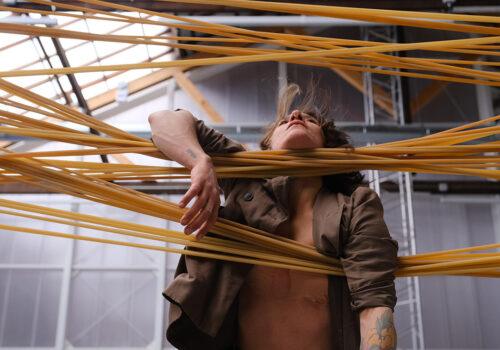


Born in Argentina, she trained there as a circus artist, focusing on aerial acrobatics. She obtained the title of Professor of Body Expression-Dance at the University of Arts of Buenos Aires; complementing her training with other arts of movement. She is professionally dedicated to aerial disciplines and scenography.
She participates as a performer in the ‘DanzAbismal’, a group of dancers dedicated to researching, experimenting and producing performative interventions in non-conventional spaces. She co-founded ‘Companyia Anexo23’ with Meme Canziani. Together, as directors and performers, they created the piece ‘PVC (C2H3Cl)n’, which was presented in various locations in Buenos Aires.
Recently, she has created her company to carry out and deepen her new contemporary circus project, ‘Tension’, which was selected by CircusNext 2024.
Tension
It is the intimate space where discomfort resides. It’s this lift, the staircase, the emergency exit. A body in contact with the object. A hostile object that damages its skin; it becomes skin, flesh; it could be another body, perhaps this body attacking, manipulating, sniffing. Bodies talking about their limits, playing with the abyss: How much pain can we endure? How much tension can we resist? Hold on!
Hold on? It could break at any time. A large latex wall that divides the interior of the exterior. Domination, submission, subjugation. From pleasure to pain and grief to aggression. The exhibition of fragility fighting to feel safe. A party with balloons: the celebration of order and disorder. The jump, the fall. Chaos, what a great chaos! It is freedom to submit!
Photo: Flavia Andolfi
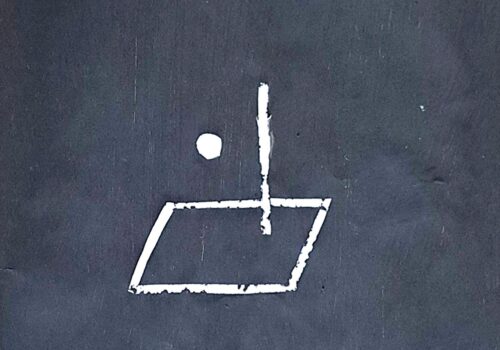


Alexandre Duran Davins (1997, Catalonia), trained in circus at the Rogelio Rivel school in Barcelona, the Lyon Circus School and the ESAC (École Supérieure des Arts du Cirque), where he specializes in pole. It is also trained in theatre, with the Stanislavski method, in martial arts, in dance-theatre and Krump dance. He currently resides in Catalonia and is in the process of creating the piece ‘Insula’.
Insula
It’s a moment, like those moments in life, that are not understood but that appear and cross through us. Even though we are social beings, the reality is that the only thing that belongs to us is ourselves. By choosing solitude, I take control over the only thing I have control of—myself. But it’s not easy.
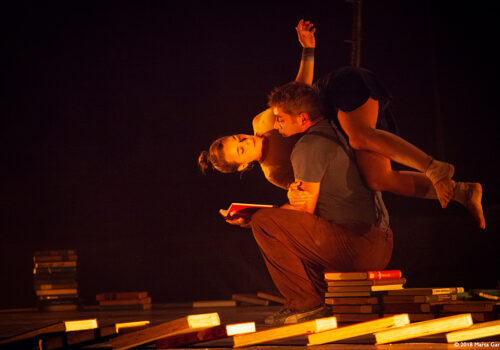


Ex-libris
Moments of unnoticed happiness: small things or moments of daily life that make us happy, that make us get out of the routine and bring us a ray of light.
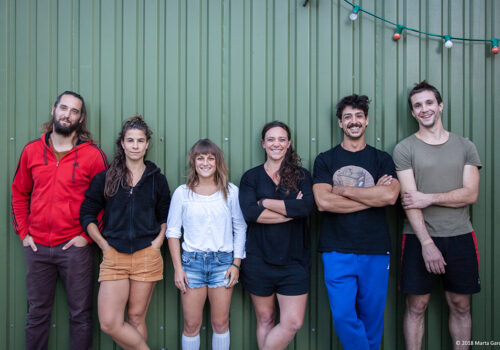


Artist collective with the aim of exceed the borders that limit us. His work transcends a level of life positioning of fraternity in front of a world that drives people towards individualism.
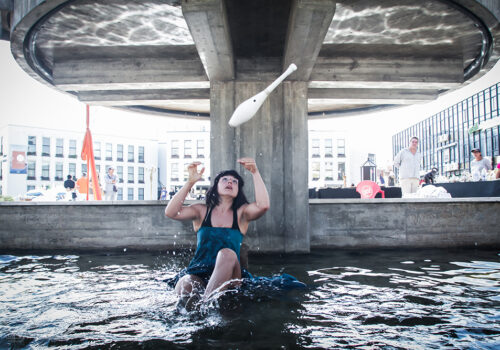


Sweet drama
Life is a SWEET DRAMA! It’s caothic and full of imperfections just like us. Get the peace among this chaos…this is the light. And the light only exists if there is darkness.



THE END IS NIGH!
12 different universes coexist in the same apocalyptic space-time. Its approach, besides being artistic, is human and circus apparatus are understood as a wealth, rather than a restriction.



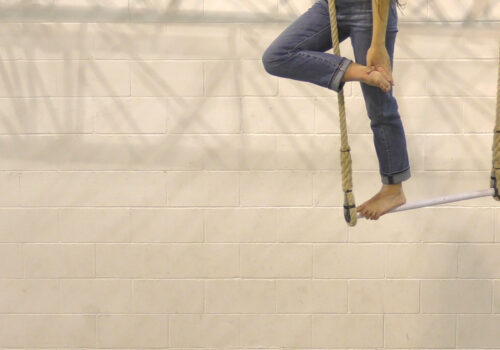


Arrels
The ARRELS project is born out of the need for dialogue between the way of inhabiting the trapeze and the way of observing it through cinematic optics. It seeks how the gesture nourishes the image and how this entails an expansion of its possibilities.
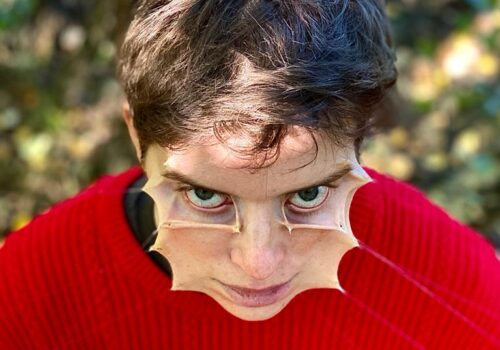


ROOM 100 has been established by Antonia Kuzmanić and Jakov Labrović in 2010. Their first performance “C8H11NO2” earned them a title of “Jeunes Talents Cirque Europe 2009-2010” laureate and critics of being an “exceptional example of an intelligent, accurate, deliberate and intensive work”. SInce then, they performed in USA, France, Belgium, Netherlands, Denmark, Finland, Spain, Switzerland, Italy, Lithuania and Croatia and produced “split”, “Seed” and “BLINK” performances.
Beside performing and producing contemporary circus performances, ROOM 100 is undergoing different projects of strengthening contemporary circus scene in Croatia and introducing contemporary circus arts, its history and importance to wider audience. Main activity is running HALA 100 – residency place for contemporary circus arts (first of its kind in Croatia and ex Yugoslavia) – and hosting international circus artists for creation, performances and workshops.
C8H11NO2 (2.0)
C8H11NO2 (2.0) is a new derivation of ROOM 100‘s original work that premiered back in 2011 in Academie Fratellini after being awarded as laureate of Jeunes Talents Cirque Europe program (now circusnext). Within “The Sphere” project, a research-creation project developing new ecologies of funding for the performing arts, ROOM 100 has been given an opportunity to bring back to life a performance that was last time presented in 2015. C8H11NO2 (2.0) is going to be another engaged performance aiming to deepen our understanding of neurodiversity and to raise the awareness and sensibility of the public about its different dimensions and complexities. We have envisioned a starkly physical creation – a mixture of contortion, dislocation, acrobatics, butoh and break dance – with a strong visual component, that will, hopefully, once again, cross the boundaries of performing arts…
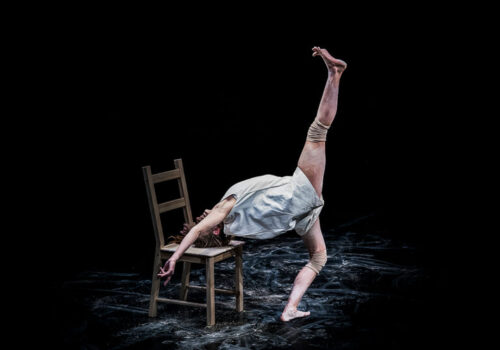


Aurora Caja (Palma de Mallorca) studies plastic arts at the Escola Massana in Barcelona and beaux-arts at the University of Barcelona. She continues her training at the FLIC Scuola di Circo in Turin, Italy. There she specializes in the discipline of verticals. Her first project is called En Perill d’Extinció (2016).
She also takes part in creative labs with professionals like Tomic, Jean Michael Guy and Volmir Cordeiro, Roberto Magro, Marta Torrents, Eva Ordoñez, Cristian Coumin and Pau Portabella.
In 2018 she starts the development of her first show, No verbal. In October 2021 she takes part in the FOCON training at the ÉSACTO Lido (École Supérieure des Arts du Cirque Toulouse-Occitanie, FR). In 2022 she presents No verbal in the form of a tour at the Picasso Museum in Barcelona, as part of the Creació i Museus device and within the Grec Festival schedule, in Barcelona. The show is produced by La Central del Circ and the Picasso Museum.
At the same time, she continues to work as a visual artist, in collaboration with Cia. Eia, Joan Català, and also independently. In 2022 she creates the exhibition Out of the Box.
No verbal
“No verbal” transcends into an intimate dimension; into a placenta, into a mental space. It’s a discovery trip which reveals itself the same way light penetrates darkness.
It’s a physical story that talks about being human from her most carnally honest perspective. A struggle to find her own voice in a world overwhelmed by noise. A rebellion.
In a plastic universe, the body defines the narrative. Its language is made of balance, acrobatic motion, contortion and drawing.
Photographer: Gaby Merz
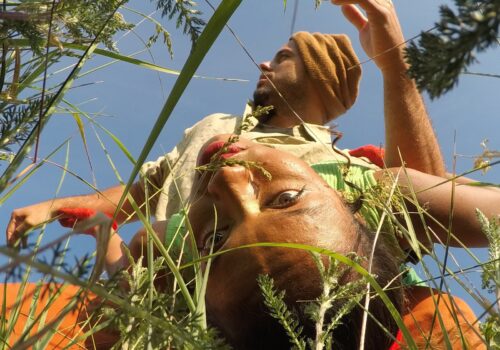


It was at the Crescer e Viver circus school, in 2011, where Cássia and Rodrigo met for the first time. During training, Cássia continued her drama studies and Rodrigo began a technical course on contemporary dance. Together with 10 other students, they form Cia Circo no Ato, with which they produce 4 performances in 5 years, they specialize in acrobatic poses, travel all over Brazil and become a reference in the Rio de Janeiro circus. In 2017 they take their most recent performance, A Salto Alto directed by Roberto Magro, on a European tour, passing through Spain, Italy, Portugal and Belgium. During this time, they decide to expand their stage research as a duo and they begin a new training at the Lido Circus School, in Toulouse.
Once they completed this training, they commenced a small, 15 minutes, project called Despir, joining UBA, the new creation from Bordeaux’s Smart Cie, which premiered on July 9th 2022. At the end of 2021 they begin imagining their first long performance: Rupestre.
‘Rupestre’
‘Rupestre’ is a poetical and corporeal license to merge past, present and future created as a surreal escape to the prehistoric origin of humanity. The intention is to reconstruct, expand and synthesize symbols, images, tools and movements capable of provoking a reflection contained in gender equality and the preservation of nature.
Music plays a main role in this show. The instruments will be played on stage with the help of a loop pedal. The plot develops from percussion, the first sound impulse of primitive man: through the clash between objects, the noises are transformed into sound, then into rhythm, melody, dance and a circus show.
‘Rupestre’ immerses itself in a trance as a language of memory, with the body conceived as the guardian of ancestry and our greatest tool to access the past and co-create a more equal and diverse future.
Firma foto: Benoit Martrenchar
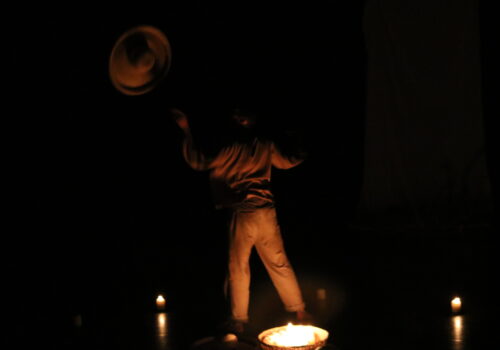


Soa Payet, stage author, works with memory, the one that will be and the one that will become following our present actions. It’s about rediscovering the stories that arise from the circus imaginary, in a more extensive sense, where dance, text and circus object mix.
He grew up between the Paris region, the island of Reunión, Columbia and finally Ecuador. He trained as a circus artist at the Amiens, Montpellier, Brussels and Toulouse circus schools.
He was a dance, clown, Butoh and theater apprentice. All these fields led him to focus his work on his own roots, to understand that which traverses generations and demands listening to.
Zoé Debary, in theater, carried out an academic research on circus gestures and words. From her trapeze-dance, she came down to the stage floor to take a step into the choreography of bodies through GAGA (GAGA MOUVEMENT) dance and the actor’s opening thanks to the Chekov training, in Brussels. Following her experience, she accompanies circus artists in their creations, «Circus remix» from Tercer Circ (2017-2018), «No puc morir» from Cie La Gesti (2019-2020), «PAPY» from Lucha Emilia (2020-2022).
Her research resonates in her works and her works resonate in her research. How do we embody (drama)circuses?
La memòria de la Pepa
Our project came to life between the mountains of Medellín and the heights of Reunión. We’re looking to formulate our internal screams. Screams of uprooting, screams hidden in crammed throats, silent screams that are heard from the bottom of the earth, screams of our ancestors and descendants.
“La memòria de la Pepa” is a circus story, the story of Pipo, a globetrotter. Remember, remember, make it materialize, bring it to light, the terrific spirit of the colonial plunderer and the depth of the jungle. Juggling with his “toquilla” straw hats, his candles, his dangling fabrics, he structures the space and his time. Pipo transforms and creates his own rituals, he dances his loss, with love.
We don’t choose to represent any culture in particular. We choose to invent a story inspired by the memory of our elders and its role in today’s questions which demands new formulations. We gather in the history of our memories to find fragments of what has been lost and what has to be reinvented.
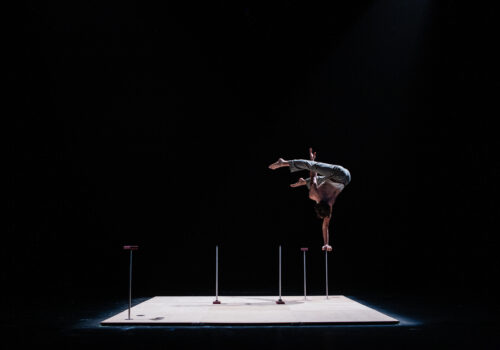


Born May 2nd 1998 in Badajoz, Extremadura region of Spain, where there are many oak trees. He was less than two years old when he was dancing to Sonia y Selena in the living room of his house, imitating each choreography from his sister’s graduation VHS tape. When he was eight years old, he wrote a poem to Virgin Mary and the rest is history.
He did his professional training at Carampa, between 20016 and 2018, and during the next course he became a part of various Freestanding Courses at DOCH, School of Dance and Circus (Stockholm), of different specialties of his discipline, hand balance acts and a course on the artistic development within circus disciplines.
In June 2019 he takes the tests and is admitted at the Brussels Higher School for Circus Arts, and three years later he graduates, and has longer hair, and he likes rain less, and he likes coffee more, and writing more, and the circus more, I suppose. He also receives his Master’s degree in Poetry from the Madrid Writer’s School and is part of the Simul Solus Collective. El patio is his first solo project as a creator/artist.
El patio
‘El patio’ is an interdisciplinary research project that plays the part of experimenting with intimacy, desire and the power of language through the stage fusion of poetry and circus, using acro-dance, hand balance acts, live writing, sound works and voice as means and channels to express.
There’s a factual meeting point between the two disciplines, from which the skeleton of the project is born: the way in which they use pure technique as a creativity channel and form as the final object. Building a space within a space, “El patio” plays with the limits between the truly intimate and the completely public, as when you try to disclose or share something intimate, its very intimate quality vanishes and it acquires a new dimension for a few seconds.
“Intimacy is a fish flopping between two oily hands and I’m losing oil, a lot of oil”.
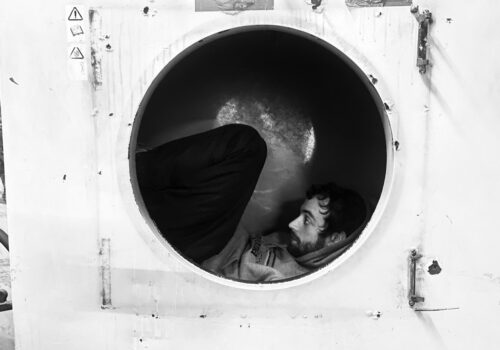


Born in Reus, he trained at the Rogelio Rivel circus school in Barcelona (2010-2012), the Pekin International Art School and ÉSACTO Lido in Toulouse (2014-2016)
He specialized in hand balance acts, torsion, dance and theater. Co-creator of the Random company. CircusNext 2019 prize winner.
He performed in different European locations, at the Circ d’Hivern de l’Ateneu Popular 9Barris and Mercat dels Flors (Barcelona), the Theatre de la Cité International (Paris), CircoBalkana (Croatia), La Grainerie (Toulouse), Halles de Scharbeck (Brussels), Mesopotàmia Circus (a festival in Türkiye). He danced with artists from Krump, Butoh, African dance, raves and elite level Bachata.
‘Candy’
“I encountered certain difficulties when going back to regain possession of myself. It’s a strange experience. Perceiving the legs as separate objects, estranged from the mind, to which they’re connected almost by chance. Imagine yourself with skepticism, as a pile of flailing members… and one needs these members, needs them desperately, but even so, sometimes, they seem very strange, very strange. The legs, above all.”
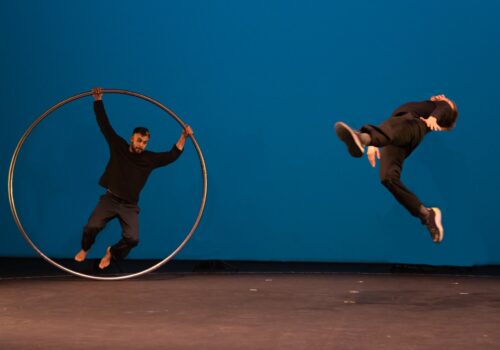


Felipe Nardiello
His artistic path begins with the separation from the world of psychology (the profession he was dedicated to) and opening up to the circus. He studied at the FLIC circus school in Italy, where he specialized in Cyr wheel.
Ginés Belchí Gabarrón
He begins his professional studies at the Rogelio Rivel circus school in Barcelona, following which, he studies at the ÉSACTO Lido, in Toulouse, where he specializes in acro-dance.
At the end of his studies, he creates and acts in the El costat fosc de les flors performance, takes part in the Circ d’Hivern SOPA de l’Ateneu Popular de Nou Barris and in the latest creation of the Primavez (France) collective –Intudewail.
Que me tiren al mar
‘Que me tiren al mar’ infiltrates an intimate, relational dimension, in an emotional space. It’s a voyage trying to connect with the general theme of problems, through physical emotion.
Quin és el teu problema?
It’s a physical story talking about being human from a problematic capacity, a fragility capacity, a capacity to question how the modern subject relates to its own life.
Quina és la teva solució?
In an abstract philosophical universe, the bodies and the Cyr wheel articulate the discourse. Their words are built for the acrobatic movement of two bodies, the emotional relation between these two and a Cyr wheel, which urges cyclical and circular situations, which can become either problems or solutions.
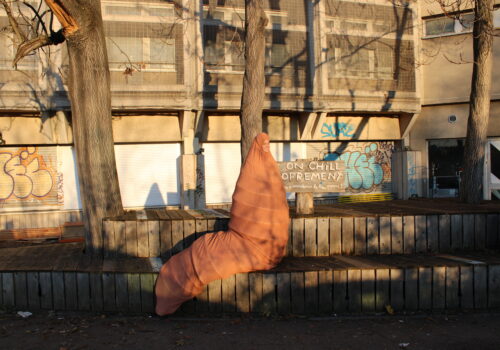


Abby Neuberger and Luca Bernini met at the FLIC circus school in Turin in 2012, where American gymnast and Italian jonglor began working together hand-in-hand and physical theatre, to create a body vocabulary typical of their duo. Together they entered Fratellini Academy in 2014 where they continued to perfect their aerobatic technique and developed their research around a playful and absurd imaginary (Willy Axton 2016; Morning 2017). Since its premiere in 2017, they create their first show, Compost.
Abby and Luca believe that the performance is an act of living in the present, in the space they are in, as well as a discovery of surprising things, the unexpected, with the audience. With the Keep Company, which they create in 2019, they want to question our collective relationship on earth and defend the performing arts as legitimate means of opening discussions about the environment. And through the show, they continue to look for what human beings can mean, through humour and laughter.
‘Underfoot’
With ‘Underfoot’, we’ll deal with the subject of nature through the angle of decomposition, of what happens after death, of the transformation of matter into another way of life, or into another living being. The team will be interested in the decomponent actors (or transformers): worms, protocharion, bacteria; for chemical reactions that are the basis of substance transformations; for reactions between atoms that create new substances without loss or addition of components. And through their language, mixing physical theater and hand-to-hand techniques, they will try to represent these reactions and relationships.
In a longer range, echoing its first creation ‘Compost’, Abby Neuberger and Luca Bernini attempt to follow the history of life cycles: evolutions and changes of geological times, and the trails left by changes of species after thousands of years of life on Earth.
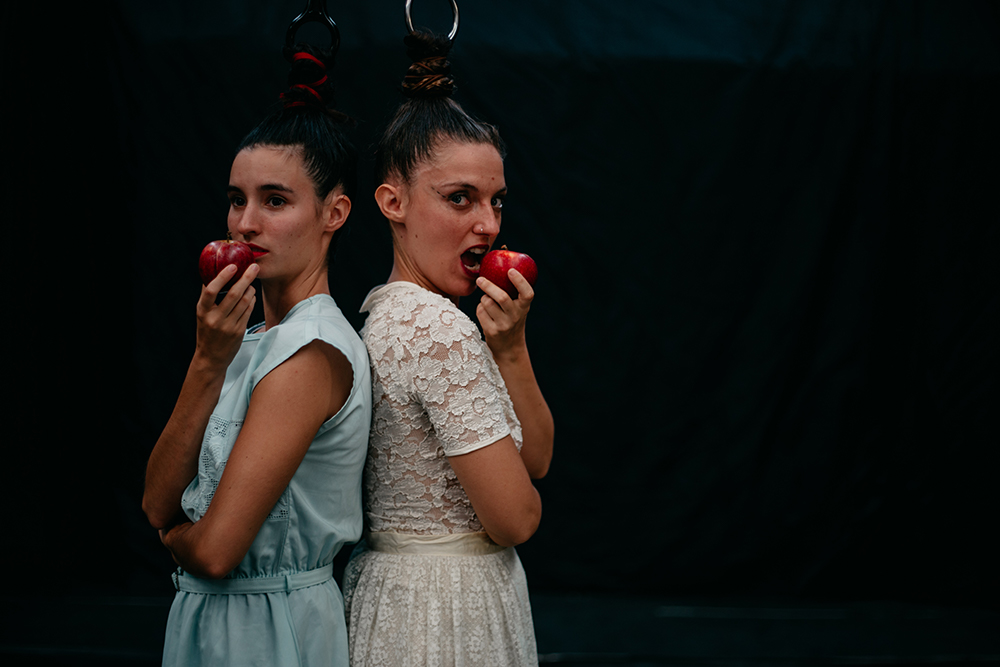


Elles
A multidisciplinary show. A combination of circus, movement and live music searching for a language that will define them.
They investigate identity and gender, treating them from a fresh point of view. A stage concert of electronic music where two people walk the scene in a continuous ecstasy and bewilderment, questioning their identities and their way of relating to each other. Questioning her identity as women and the clichés they are associated with. What is a woman? What is a man? What are we if we are nothing?
Out of control, they step on glass, they mix music live, they play instruments face down at several meters high, they suspend each other by the hair, they throw darts, they explode apples, they eat them and form body structures impossible to decode.
Picture: Mar Bautista
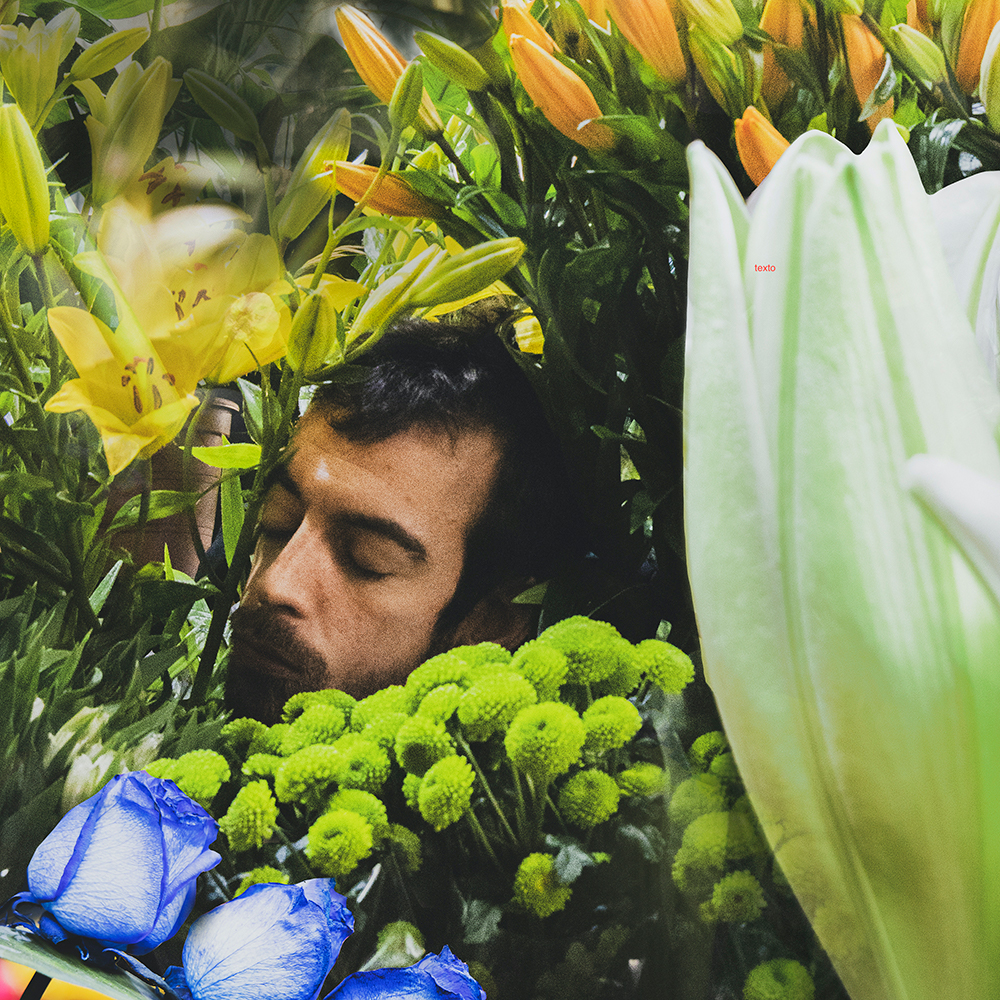


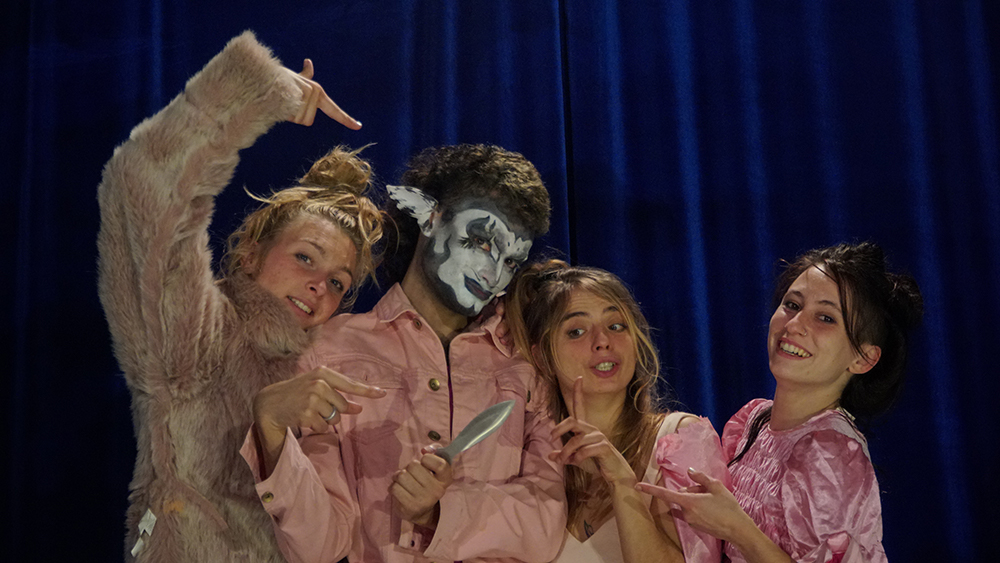


Niebieski
Four people enter a blue room, as a plane about to take off. A space of emotional management which reveals its system, adapting and offering what is necessary to modify and move freely within those aspects that society calls unworthy and secret.
They will appropriate symbols of popular culture through playing with the everyday objects that the room provides. A circuit where painfulness and dirtiness mutate into a ritual of initiation of which they were deprived. To develop a way to relate to the emblems of patriarchal binarism will lead to a collective narrative. They will put empathy into practice, to navigate all the processes of turning empowering everything that once was inappropriate.
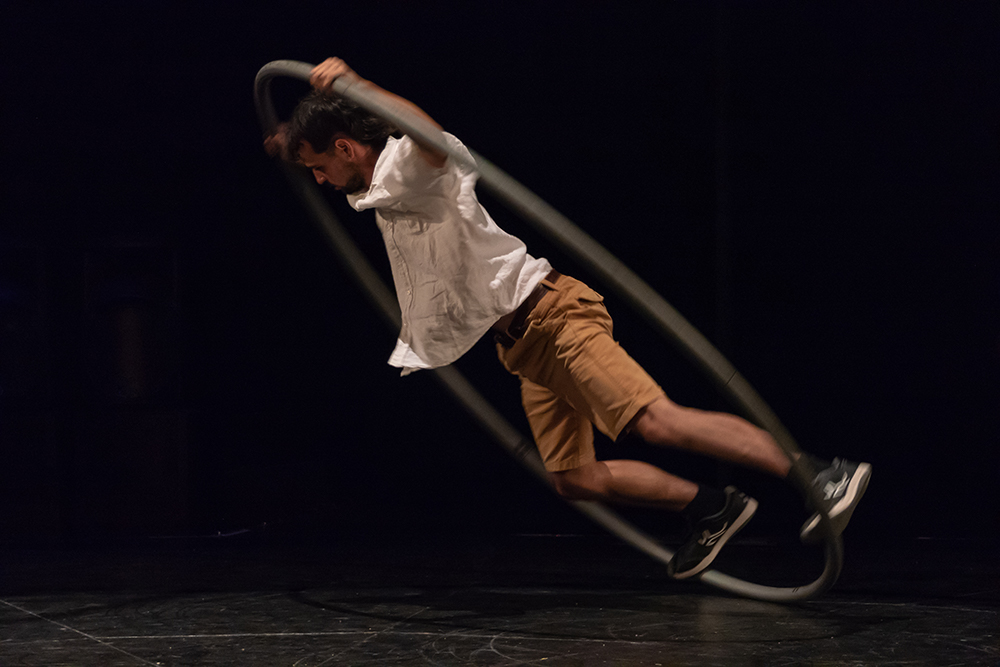


Pròxima Centauri
The scene is full of autumn leaves. A pendulum swings at ground level and removes the leaves with the air it generates. From here the staging plays between what is natural and simple and what is artificial and complex, through elements such as water, leaves, pendulum and a cyr wheel.
With the help of these elements, it explores the languages we use through science and art, seeking in creativity the common point between any scientific and artistic discipline. It takes as a reference the evolution of a star similar to the sun and is reflected in its vital phases from birth to death. Is science simply a way of understanding the art present in nature?
The piece is named after Proxima Centauri: the closest star to our solar system located about 4.2 light-years away and is part of a 3-star system, one of them very similar to our sun.
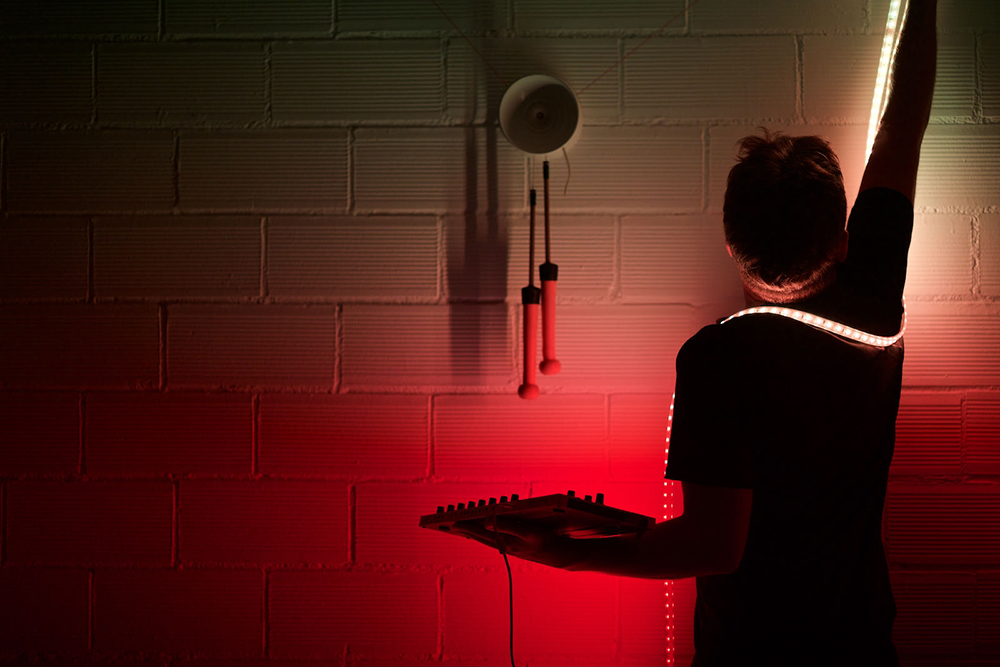


Polychromatic Void
For some time now I have been quite obsessed with ambient music and the generative systems that many sound landscapers use to reach new horizons and textures. After researching a lot about generative music, I decided to do the same with juggling, and look in the direction of a couple of subgenres that I currently call Ambient Juggling and Generative Juggling.
Ambient Juggling is an unpretentious juggling, it is an act that has as its engine the constant dissolution, it exists without having to stand out with respect to the environment. Generative juggling goes a step further, trying to understand the whole environment as a system that gives inputs and receives stimuli, and based on all these parameters it evolves towards unplanned places, but they can be bounded. Polychromatic Void is more aimed at “generative juggling”. Create a system between juggling, juggling, video, music, lighting, code and other elements, where everything is connected and in a constant dialogue.
Related news

Open registrations for the P.L.A.T on November 20 with Cia. Croma and Luis Mantilla

Resolution of the call for the Transits Residencies 2026 and the ‘Barcelona Crea Grants – Creation Factories’
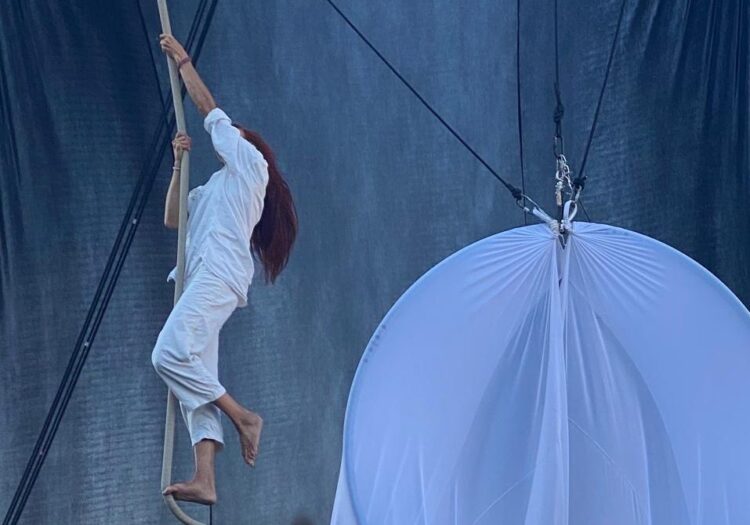
Open call to participate in CirCulem 2026/2027
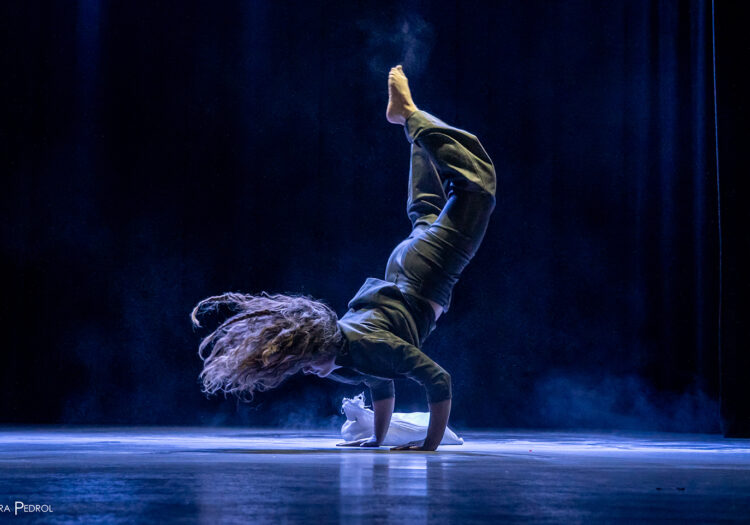
Open Call – Trànsits 2026 Residency Program, supported by the ‘Barcelona Crea Grants – Creative Factories’

Resolution of the 2025 Iberescena Program Call for Proposals

“Can We Create Without Memory?” Check out the 2025 fanzine!
Other residencies
MEDIATION








